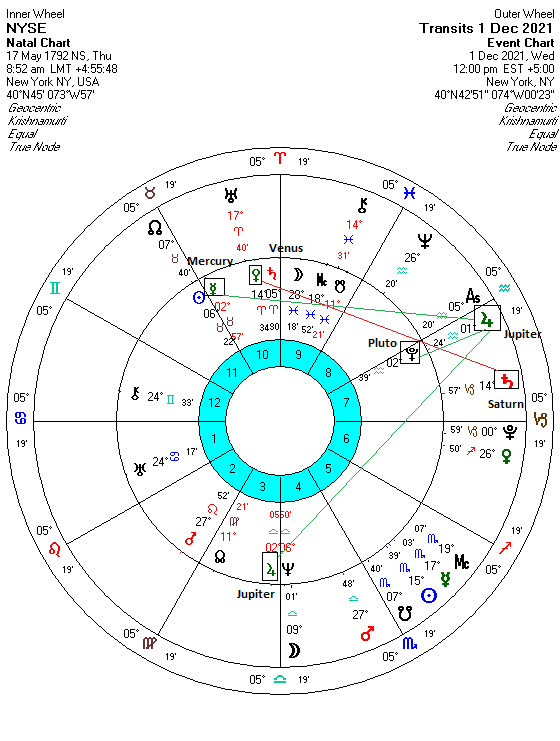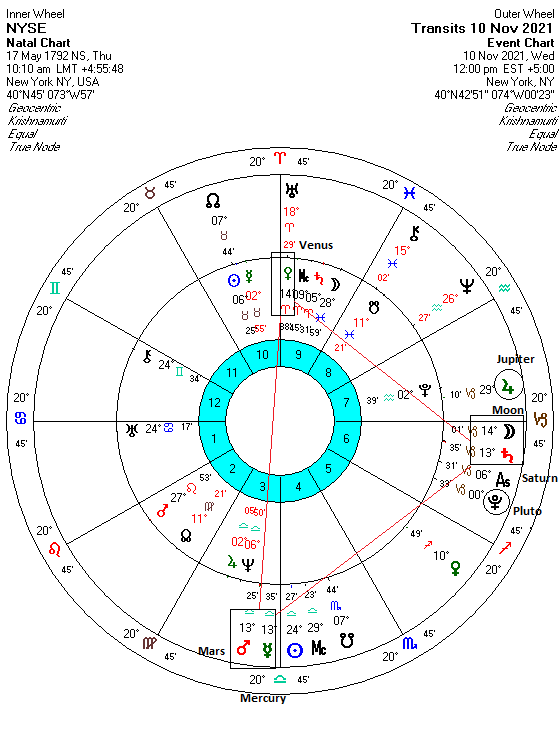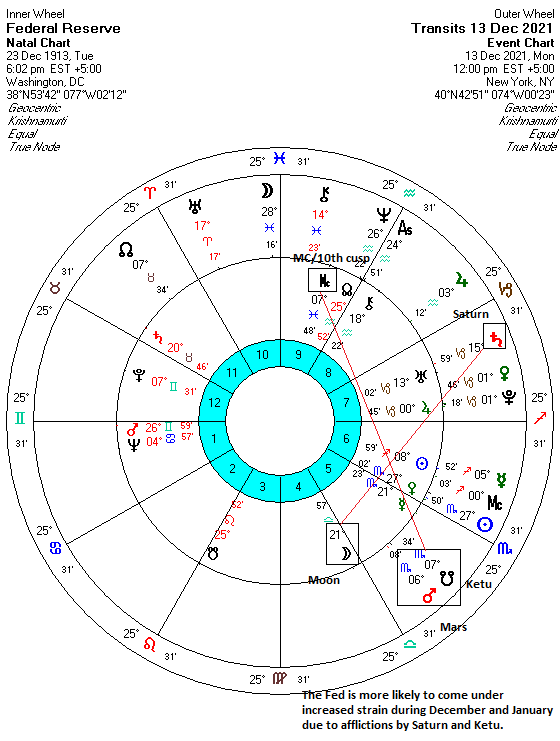 (29 November 2021)
The pandemic continues. An official alert from the WHO regarding the
new Omicron variant caused markets to sell-off sharply on Friday amid
mounting concern that the virus may becoming more transmissible. Many
countries have tightened restrictions in response to the new threat
although it is still early days. Based on early data out of South
Africa, it seems that most cases are mild among vaccinated people,
although unvaccinated people may be more likely to be experience
serious illness and hospitalization.
(29 November 2021)
The pandemic continues. An official alert from the WHO regarding the
new Omicron variant caused markets to sell-off sharply on Friday amid
mounting concern that the virus may becoming more transmissible. Many
countries have tightened restrictions in response to the new threat
although it is still early days. Based on early data out of South
Africa, it seems that most cases are mild among vaccinated people,
although unvaccinated people may be more likely to be experience
serious illness and hospitalization.
While Friday's near-panic selling saw stocks fall by more than 2%,
markets generally rebounded today after President Joe Biden delivered a
reassuring address and ruled out further lockdowns for now. And Fed
Chair Jerome Powell was quick to calm markets by noting new uncertainty
in the inflation outlook given the disruptive potential of the new
variant. This was a way of reminding investors that the Fed tapering of
asset purchases may be subject to change. In other words, more
monetary stimulus will come if needed.
While the early data on the variant is somewhat encouraging (more
transmissible, but less lethal), the planets are a source of concern.
One potential trouble spot is the upcoming December conjunction of
Saturn with the south node of Neptune at 16 Capricorn (sidereal
zodiac). Neptune is one of the planetary significators for illness and
Saturn is the planet of suffering. The blending of these two energies
in mid-December could indicate that Omicron may coincide some new
challenges in the pandemic.
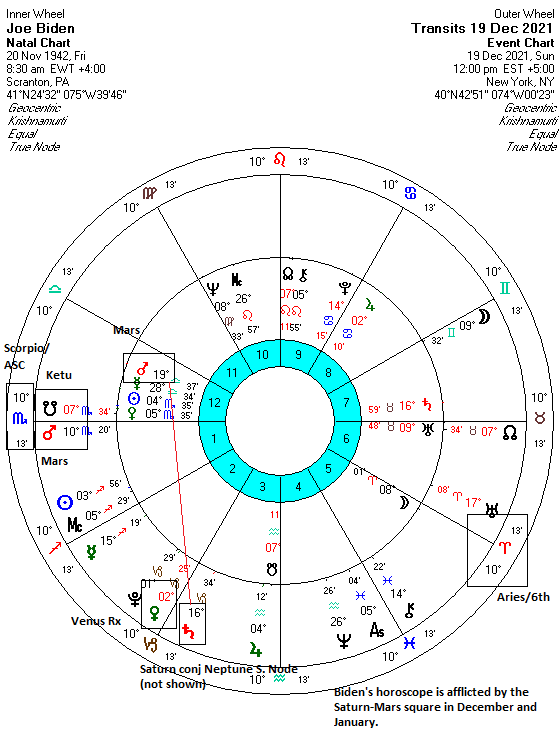
The likelihood of a fresh round Covid problems may also be seen in President Biden's horoscope as I have previously noted in an August post. Since the president's chart is an indirect reflection for the nation (and to a lesser extent, the world), the upcoming Saturn (16 Capricorn) square to Biden's natal Mars (19 Libra) is worrisome. Mars is doubly significant here because it rules both Biden's 1st house (Scorpio) representing the self and the body and the 6th house of health (Aries).
Afflictions to these houses suggests health challenges for either him personally or for the country as a whole. The emergence of the Omicron variant right before this Saturn-Mars aspect is likely more than coincidental. This aspect will become exact for its theoretical maximum effect in mid-January.
These health-related planetary afflictions may raise the odds that the Omicron variant may be more than just a blip. And when we factor in the prospect of the Venus retrograde cycle starting right around the same time (December 19), it is possible that markets will be more vulnerable in the coming weeks. While Venus retrograde cycles are not always bearish, they are associated with changes in the prevailing trend.
As far as this week is concerned, the downside risk looks greater in the second half of the week as the Moon conjoins Mars and Ketu.
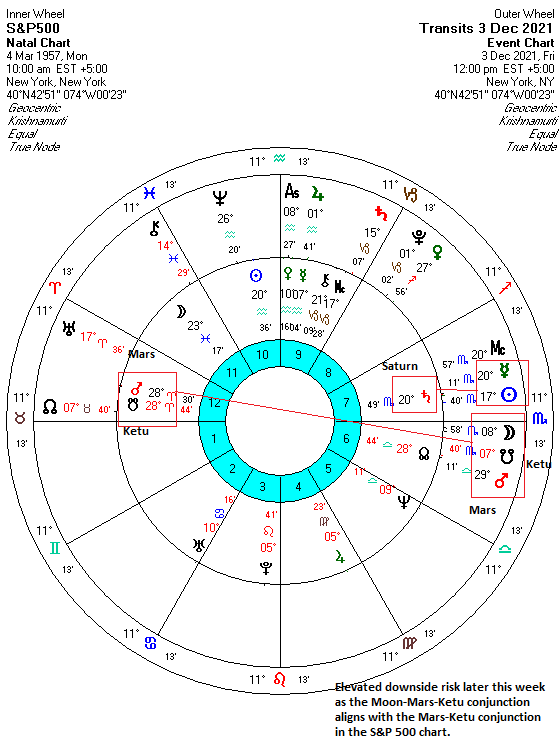
For more details,

